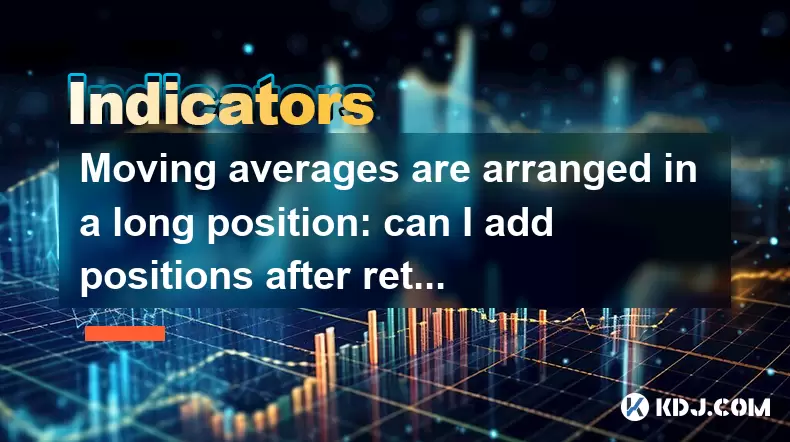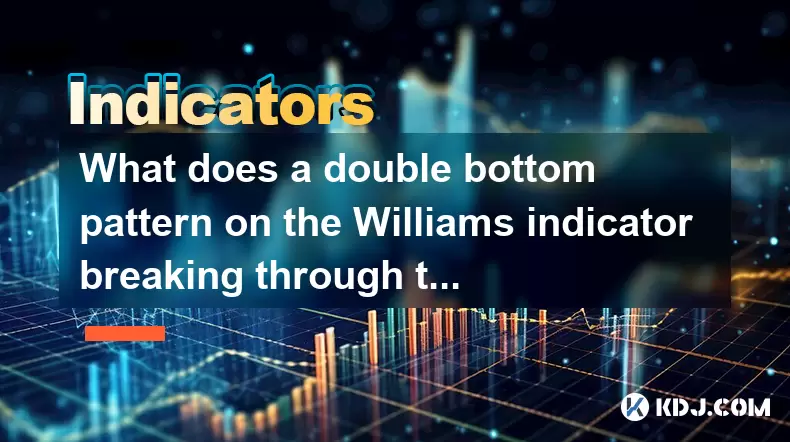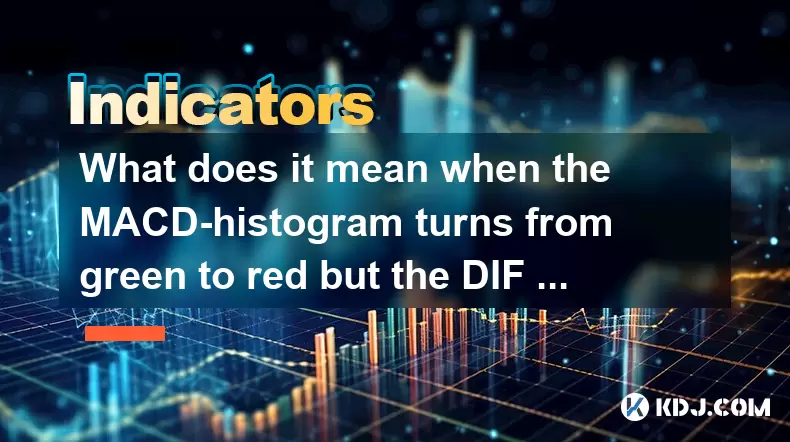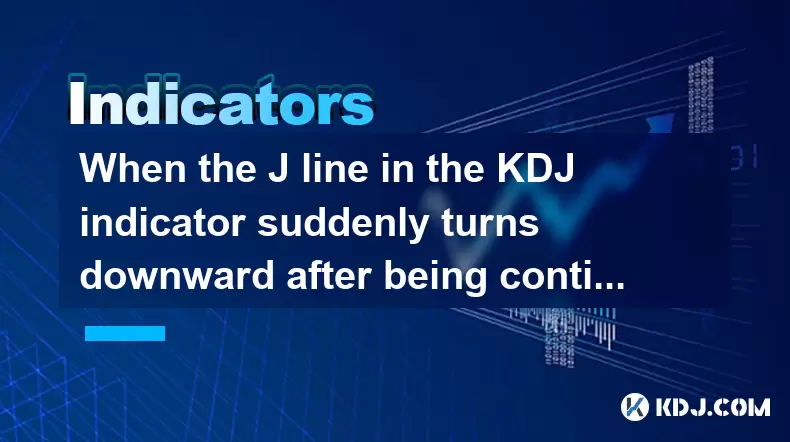-
 Bitcoin
Bitcoin $116400
-0.36% -
 Ethereum
Ethereum $4033
3.40% -
 XRP
XRP $3.302
-1.26% -
 Tether USDt
Tether USDt $1.000
-0.02% -
 BNB
BNB $796.1
1.67% -
 Solana
Solana $177.8
1.89% -
 USDC
USDC $0.9999
0.00% -
 Dogecoin
Dogecoin $0.2314
4.09% -
 TRON
TRON $0.3381
0.14% -
 Cardano
Cardano $0.7989
1.22% -
 Stellar
Stellar $0.4496
-1.84% -
 Chainlink
Chainlink $20.42
9.42% -
 Hyperliquid
Hyperliquid $41.17
0.88% -
 Sui
Sui $3.914
3.77% -
 Bitcoin Cash
Bitcoin Cash $584.7
1.52% -
 Hedera
Hedera $0.2632
-0.54% -
 Avalanche
Avalanche $24.09
3.40% -
 Ethena USDe
Ethena USDe $1.001
-0.02% -
 Litecoin
Litecoin $123.2
1.33% -
 Toncoin
Toncoin $3.318
-0.04% -
 UNUS SED LEO
UNUS SED LEO $8.984
-0.05% -
 Shiba Inu
Shiba Inu $0.00001323
2.85% -
 Uniswap
Uniswap $10.90
4.41% -
 Polkadot
Polkadot $3.999
3.34% -
 Dai
Dai $1.000
0.01% -
 Cronos
Cronos $0.1630
9.64% -
 Bitget Token
Bitget Token $4.484
0.82% -
 Monero
Monero $272.4
2.44% -
 Pepe
Pepe $0.00001173
6.03% -
 Aave
Aave $290.8
2.88%
Moving averages are arranged in a long position: can I add positions after retracement to the 5-day line?
Adding positions after a retracement to the 5-day moving average can be effective in crypto trading when the 5-day MA is above the 20-day MA, signaling a bullish trend.
Jun 02, 2025 at 04:08 pm

In the world of cryptocurrency trading, moving averages play a crucial role in helping traders identify trends and make informed decisions. One common strategy involves using moving averages to determine when to enter and exit positions. In this article, we will explore the strategy of adding positions after a retracement to the 5-day moving average when the moving averages are arranged in a long position.
Understanding Moving Averages
Moving averages are a type of technical indicator used to smooth out price data and identify trends over a specified period. They are calculated by averaging the price of an asset over a given number of periods. In the context of cryptocurrency trading, moving averages help traders filter out short-term price fluctuations and focus on the overall trend.
There are several types of moving averages, with the most common being the simple moving average (SMA) and the exponential moving average (EMA). The SMA gives equal weight to all prices within the period, while the EMA places more emphasis on recent prices, making it more responsive to recent changes.
Long Position and Moving Averages
A long position in trading refers to buying an asset with the expectation that its price will rise. When traders talk about moving averages being arranged in a long position, they typically mean that the shorter-term moving average is above the longer-term moving average, indicating a bullish trend.
For example, if the 5-day moving average is above the 20-day moving average, it suggests that the short-term trend is stronger than the long-term trend, and the market is in a bullish phase. This arrangement of moving averages can be a signal for traders to consider entering or adding to long positions.
Retracement to the 5-Day Moving Average
A retracement occurs when the price of an asset temporarily moves against the prevailing trend before resuming its original direction. In the context of this strategy, a retracement to the 5-day moving average means that the price has pulled back to touch or come close to the 5-day moving average after being above it.
Traders often view such retracements as opportunities to add to their existing long positions. The rationale is that the 5-day moving average acts as a support level during a bullish trend, and a retracement to this level could signal a good entry point before the price continues its upward movement.
Adding Positions After Retracement
When considering adding positions after a retracement to the 5-day moving average, traders should follow a systematic approach to manage risk and maximize potential gains. Here’s how you can implement this strategy:
- Monitor the moving averages: Keep an eye on the 5-day and 20-day moving averages to ensure they are arranged in a long position, with the 5-day above the 20-day.
- Identify the retracement: Watch for the price to retrace back to the 5-day moving average. This can be observed on a price chart where the price touches or comes very close to the 5-day moving average line.
- Assess the market conditions: Before adding a position, evaluate other market indicators and news that could affect the price movement. Ensure that the overall market sentiment remains bullish.
- Enter the trade: Once the price retraces to the 5-day moving average and the market conditions are favorable, consider adding to your long position. You can do this by purchasing additional units of the cryptocurrency.
- Set stop-loss and take-profit levels: To manage risk, set a stop-loss order below the 5-day moving average to limit potential losses if the price breaks down. Additionally, set a take-profit level to secure gains when the price reaches a predetermined target.
Risk Management and Position Sizing
Effective risk management is crucial when adding positions after a retracement. Traders should consider the following aspects:
- Position sizing: Determine the size of the additional position based on your overall risk tolerance and the current size of your existing position. A common approach is to risk a small percentage of your trading capital on each trade.
- Diversification: Avoid over-concentrating your portfolio in a single asset. Diversify your holdings to spread risk across different cryptocurrencies.
- Regular review: Continuously monitor the performance of your positions and be ready to adjust your strategy if market conditions change.
Technical Analysis and Confirmation Signals
While the retracement to the 5-day moving average can be a strong signal, it’s beneficial to use additional technical indicators to confirm the trade. Some traders might look at the following:
- Relative Strength Index (RSI): The RSI can help identify overbought or oversold conditions. A retracement to the 5-day moving average with an RSI that is not overbought (typically below 70) can be a more reliable signal.
- Volume analysis: Increased trading volume during the retracement can indicate strong interest and potential for a continued upward move.
- Candlestick patterns: Bullish candlestick patterns, such as hammer or engulfing patterns, at the 5-day moving average can provide additional confirmation of a potential reversal and continuation of the uptrend.
Practical Example of Adding Positions
To illustrate how this strategy works in practice, let’s consider a hypothetical scenario with Bitcoin (BTC):
- Initial position: You have already entered a long position in BTC when the 5-day moving average crossed above the 20-day moving average.
- Price movement: The price of BTC rises but then retraces to the 5-day moving average.
- Assessment: You review the market conditions and confirm that the overall trend remains bullish. The RSI is at 60, indicating that BTC is not overbought.
- Adding the position: You decide to add to your existing long position in BTC as it touches the 5-day moving average.
- Risk management: You set a stop-loss order just below the 5-day moving average and a take-profit level at a resistance level identified on the chart.
Considerations and Limitations
While adding positions after a retracement to the 5-day moving average can be an effective strategy, it’s important to be aware of its limitations and potential risks:
- False signals: Not all retracements lead to continued upward movement. Sometimes, the price may break below the 5-day moving average, resulting in a trend reversal.
- Market volatility: Cryptocurrency markets can be highly volatile, and sudden price swings can quickly invalidate the strategy.
- Overtrading: Adding positions too frequently can lead to overtrading and increased transaction costs, which can erode potential profits.
Frequently Asked Questions
Q1: How do I know if the 5-day moving average is a reliable support level?
A1: The reliability of the 5-day moving average as a support level depends on various factors, including the strength of the overall trend, the asset’s historical behavior, and the presence of other supportive technical indicators. You can increase confidence in the 5-day moving average as a support level by observing multiple instances where the price has bounced off this level in the past and by using additional indicators like the RSI and volume analysis to confirm the support.
Q2: Can this strategy be applied to other time frames and moving averages?
A2: Yes, this strategy can be adapted to different time frames and moving averages. For example, you could use a 10-day and 30-day moving average on a daily chart or a 1-hour and 4-hour moving average on an hourly chart. The key is to ensure that the shorter-term moving average is above the longer-term moving average to confirm the bullish trend and that the retracement occurs to the shorter-term moving average.
Q3: What should I do if the price breaks below the 5-day moving average after adding a position?
A3: If the price breaks below the 5-day moving average after adding a position, it could signal a potential trend reversal. In this case, you should consider exiting the trade to minimize losses. If you have set a stop-loss order below the 5-day moving average, it should automatically trigger and close your position. Always adhere to your risk management rules and avoid holding onto losing positions in hopes of a recovery.
Q4: How often should I add positions using this strategy?
A4: The frequency of adding positions using this strategy depends on your trading style and risk tolerance. Some traders might add positions every time a retracement to the 5-day moving average occurs, while others might do so less frequently, waiting for additional confirmation signals. It’s important to avoid overtrading and to consider the impact of transaction costs on your overall profitability.
Disclaimer:info@kdj.com
The information provided is not trading advice. kdj.com does not assume any responsibility for any investments made based on the information provided in this article. Cryptocurrencies are highly volatile and it is highly recommended that you invest with caution after thorough research!
If you believe that the content used on this website infringes your copyright, please contact us immediately (info@kdj.com) and we will delete it promptly.
- Moat Stocks & Mega-Cap Momentum: July's Standout Performance
- 2025-08-09 12:30:12
- Injective (INJ) Eyes $15.39 Breakout Amidst Explosive Network Growth
- 2025-08-09 12:30:12
- Ripple vs. SEC: XRP Price Soars as Legal Battles End, But Can It Outpace Rising Competitors?
- 2025-08-09 13:10:12
- DWP Management, XRP, and Digital Asset Funds: A New Era for Institutional Investment?
- 2025-08-09 13:30:12
- Pi Network's KYB Verification: A Leap Towards Sustainable Token Launch
- 2025-08-09 13:30:12
- Bitcoin, Dollar Alternative, and Institutional Adoption: A New Era?
- 2025-08-09 13:35:12
Related knowledge

What does it mean when the Triple Moving Average (TRIX) turns downward but the price doesn't fall?
Aug 09,2025 at 12:42pm
Understanding the Triple Moving Average (TRIX) IndicatorThe Triple Moving Average, commonly known as TRIX, is a momentum oscillator designed to filter...

What does it mean when the Williams' oscillator repeatedly hits bottoms but fails to rebound?
Aug 09,2025 at 09:28am
Understanding the Williams %R OscillatorThe Williams %R oscillator, developed by Larry Williams, is a momentum indicator used in technical analysis to...

What does a double bottom pattern on the Williams indicator breaking through the 50-day midline indicate?
Aug 09,2025 at 10:56am
Understanding the Williams %R IndicatorThe Williams %R indicator, developed by Larry Williams, is a momentum oscillator that measures overbought and o...

What does it mean when the MACD-histogram turns from green to red but the DIF line fails to form a golden cross?
Aug 09,2025 at 10:15am
Understanding the MACD and Its ComponentsThe MACD (Moving Average Convergence Divergence) is a widely used technical analysis tool in the cryptocurren...

When the J line in the KDJ indicator suddenly turns downward after being continuously overbought, does it indicate a top?
Aug 09,2025 at 06:35am
Understanding the KDJ Indicator and Its ComponentsThe KDJ indicator is a momentum oscillator widely used in cryptocurrency technical analysis to ident...

What does it mean when the TRIX indicator suddenly diverges downward after a long period of convergence?
Aug 09,2025 at 12:56am
Understanding the TRIX Indicator in Cryptocurrency TradingThe TRIX indicator, or Triple Exponential Average, is a momentum oscillator used in technica...

What does it mean when the Triple Moving Average (TRIX) turns downward but the price doesn't fall?
Aug 09,2025 at 12:42pm
Understanding the Triple Moving Average (TRIX) IndicatorThe Triple Moving Average, commonly known as TRIX, is a momentum oscillator designed to filter...

What does it mean when the Williams' oscillator repeatedly hits bottoms but fails to rebound?
Aug 09,2025 at 09:28am
Understanding the Williams %R OscillatorThe Williams %R oscillator, developed by Larry Williams, is a momentum indicator used in technical analysis to...

What does a double bottom pattern on the Williams indicator breaking through the 50-day midline indicate?
Aug 09,2025 at 10:56am
Understanding the Williams %R IndicatorThe Williams %R indicator, developed by Larry Williams, is a momentum oscillator that measures overbought and o...

What does it mean when the MACD-histogram turns from green to red but the DIF line fails to form a golden cross?
Aug 09,2025 at 10:15am
Understanding the MACD and Its ComponentsThe MACD (Moving Average Convergence Divergence) is a widely used technical analysis tool in the cryptocurren...

When the J line in the KDJ indicator suddenly turns downward after being continuously overbought, does it indicate a top?
Aug 09,2025 at 06:35am
Understanding the KDJ Indicator and Its ComponentsThe KDJ indicator is a momentum oscillator widely used in cryptocurrency technical analysis to ident...

What does it mean when the TRIX indicator suddenly diverges downward after a long period of convergence?
Aug 09,2025 at 12:56am
Understanding the TRIX Indicator in Cryptocurrency TradingThe TRIX indicator, or Triple Exponential Average, is a momentum oscillator used in technica...
See all articles

























































































